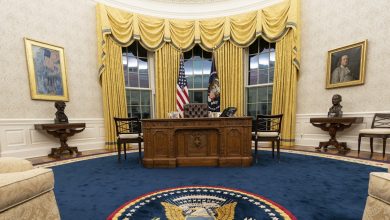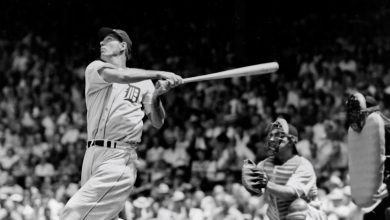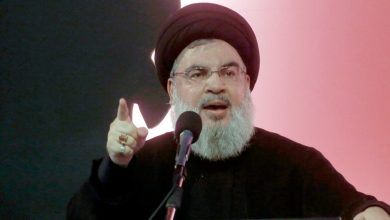why people give fraudsters a second chance

مجلة المذنب نت متابعات عالمية:
The Fyre music festival and its well-publicised failure are widely seen as a mixture of incompetence and fraud, embodied in Billy McFarland, its chief architect. People paid thousands of dollars for what was advertised as a luxury music festival but they were served simple cheese sandwiches and the entertainment was cancelled. McFarland spent almost four years in prison for fraud.
But now McFarland is out and promoting Fyre Festival II. He claims that he has already sold 100 tickets at the early bird price of £499.
Why would anyone give the Fyre Festival a second chance? Research shows that people’s mental shortcuts can give them confidence in someone who has let them down before.
Prices for Fyre Festival II range from US$1,400 and $1.1 million (£1,050 and £824,000). Nothing specific has yet been offered, other than an indefinite location (a private island off the Caribbean coast of Mexico), some activities including scuba diving with McFarland himself, and an approximate date (April, 2025).
McFarland’s former business partner Andy King has said that Fyre Festival II raises “a lot of red flags.”. Yet even King, who lost US$1 million on the original Fyre Festival, admitted he met McFarland for Fyre Festival II talks before becoming wary.
There is little research on this topic, but I found some help in The Big Con, written in 1940 by David Maurer, a professor of linguistics who dedicated his career to studying the language and culture of those leading a criminal lifestyle, including con artists.
The Big Con was the inspiration for the 1973 Paul Newman movie The Sting. You may remember that (spoilers) Newman and Robert Redford and his team fleece Robert Shaw using a con in which the mark is persuaded that he can bet on horse races after they are run because of a delay in messages received by a betting shop.
A central factor is ambiguity. It is hard to be certain from accounts of Fyre Festival whether McFarland set out to be a con man, or is simply a persuasive person who took on more than he could handle. Perhaps McFarland has learned his lessons and will not make the same mistakes. In The Big Con, the grifters tried to make their marks unsure whether they were really being scammed, even after the money changed hands. In The Sting, Robert Shaw’s character never learns that he was conned.
Maurer documents many cases of marks coming back for more, convinced that the original failure was due to bad luck that won’t be repeated. A typical example comes from a con artist named the Big Alabama Kid, who tells Maurer about a mark they had conned out of US$50,000 in Miami. After he had lost all his money in a gambling con they offered him a chance to try again. But he did not return.
Three months later, “who should come in smiling but Mr. Bates with a lot of apologies for keeping me waiting so long. He said that his banker had tried to tell him that this deal was a swindle, and wouldn’t let him have his money. So he waited until things had cooled off at home and the banker had forgotten all about it. Then he went to the bank, drew out his money, and caught the first train for the south.”
Giving the right impression
It is sometimes hard to persuade even the victims of a con that they are victims.
Another factor is confidence, both on the part of the grifter and the mark. People often follow the confidence heuristic (or mental shortcut) when judging whether to believe others. The confidence heuristic is that people are confident when they believe they are right, and this confidence makes them persuasive. Such an ability to exude confidence is one of the key skills that all con men must have.
The mark also has to be confident. That is, to be able to rely on their own ability to discern a good opportunity when they see it. Maurer finds the mark is typically someone who has achieved high social status, and sees themselves as having “some inherent superiority, especially as regards matters of sound judgment in finance and investment … as a person of vision and even of genius”.
It is not hard to see the potential Fyre Festival attendee or investor here, someone who has money to spare, and who hopes to discover the new Burning Man or invest in it.
Scarcity, time pressure and the fear of missing out are also powerful psychological motivators likely to make people susceptible to being conned – especially if the essence of the con is that the opportunity is one time only. If we think something is difficult to get, we want it more.
This is what US psychologist Robert Cialdini refers to as the scarcity principle, and is a motivation that emerges early in life. A 2018 study I co-authored found children as young as six preferred scarce goods compared to abundant ones.
Maurer’s studies of con artists showed that they carefully craft the set up so that the mark has an exclusive one time only opportunity to make his big score.
McFarland claims to have 5,000 unique requests for tickets, but only 3,000 slots available. If you go to the Fyre Festival website you cannot buy tickets. Applicants receive the message “Thank you for your application. If approved, the FYRE concierge will be in touch.”
I am currently in the queue for one of these tickets, and so far the concierge has not been in touch. Will I be lucky enough to be one of the chosen few?
نشكركم على قراءة المنشور عبر مجلة المذنب نت, المتخصصة في التداول والعملات الرقمية والمشفرة














